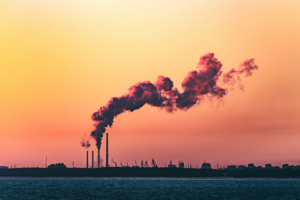After a short pause, we’re back with another post in our special series about SDGs and One Health. This week, our resident researcher Costanza Manes will take a closer look at SDG 7: Affordable and Clean Energy. This is especially relevant in light of the ongoing COP27.

Sustainable Development Goal 7 reads: “Ensure access to affordable, reliable, sustainable, and modern energy for all”. This SDG is incredibly relevant to the 21st century when so many alternatives have been found to produce energy that is clean and friendly to the environment. As we learn from the One Health philosophy, an environmentally friendly energy source is also friendly to global health. The SDG highlight that 2.4 billion people are still cooking using “harmful and polluting fuels”. Those types of fuels are a hazard and responsible for air and water pollution. Such contaminants include nitrogen oxides, carbon monoxide, sulfur dioxide, and mercury. These components are not only harmful to environmental, human, and wildlife health; they also cause acid rain, eutrophication, and damage to agriculture and our food system. Hence, access to clean energy in the long term is indeed extremely relevant.
Importance of clean energy sources to planetary health
SDG goal 7.2 recites “By 2030, increase substantially the share of renewable energy in the global energy mix”. This summarizes what was said in the paragraph above. Investing in clean energy is essential to ensure planetary health’s progression and recovery. Fossil fuels and consequential CO2 emissions are at the very center of the climate crisis, and the catastrophic chain of events that is expected to follow. In fact, it is already taking a toll on planetary health. Emissions of carbon dioxide (CO2) worldwide from burning fossil fuels release about 34 billion tonnes per year, of which about 45% is from coal, which is a very concerning estimate.

Moreover, the SDG 7.1 and SDG 7.3 targets respectively recite: “By 2030, ensure universal access to affordable, reliable, and modern energy services”, and “By 2030, double the global rate of improvement in energy efficiency”. This implies that millions of people still do not have efficient access to energy, or any access at all. As a matter of fact, “700 million people globally are living in the dark”, meaning having no access to energy whatsoever. Energy is a major component of health. Energy allows us to store foods and medicines at low temperatures to avoid possible contamination from spoiling and harmful food-borne diseases. Energy also allows the correct functionality of medical equipment, which is essential for human health and survival. These are just some examples of the very basic needs humans have for energy in their everyday lives.
Setting the progress
The concept of obtaining and using energy has an incredibly complex array of implications for environmental, human, and animal health. It is essential to keep that in mind when we make our energy choice, from the small “turn the light off when you leave a room” to the larger government decisions regarding the transition to alternative and renewable solutions to promote the mitigation of the climate crisis and advancement of planetary health.
By: Costanza Manes | Research Fellow
 0
0
